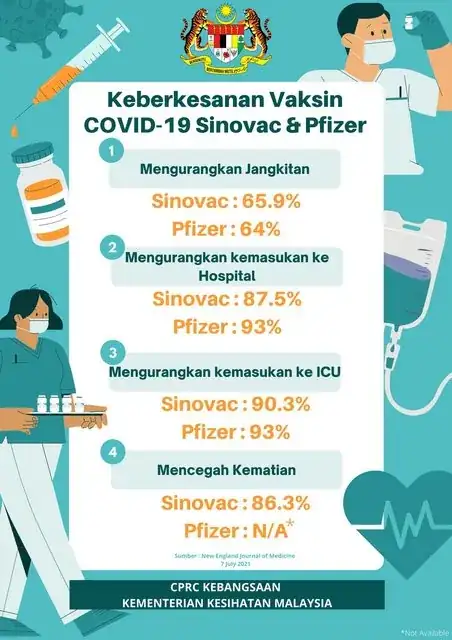I've seen infographics such as this, that compares the efficacy of Sinovac and Pfizer.
In the infographic it says that, according to New England Journal of Medicine :
- Sinovac prevents 65.9% of the disease, Pfizer 64% (Yes, the efficacy of Sinovac is higher in this regard)
- Sinovac reduces hospitalization by 87.5%, Pfizer 93%
- Sinovac reduces ICU cases by 90.3%, Pfizer by 93%
- Sinovac prevents 86.3% death, as for Pfizer, no data on this.
Malaysia Health Department is promoting this to reinforce people's confidence in Sinovac, after the country decided to phase out China’s Sinovac Vaccine.
- Where do the numbers come from?
- Did New England Journal of Medicine (7/7/2021) really claim this?
- Are the numbers truly compatible?
Note: My opinion about the efficacy of both vaccines is edited out of the question to avoid unnecessary trolls and flame wars.
